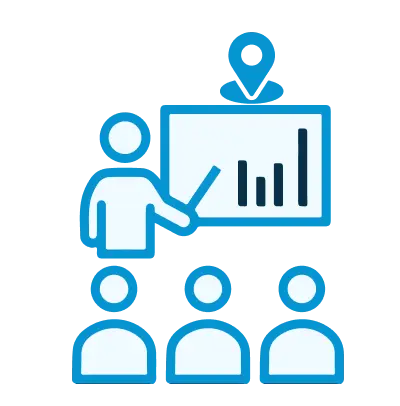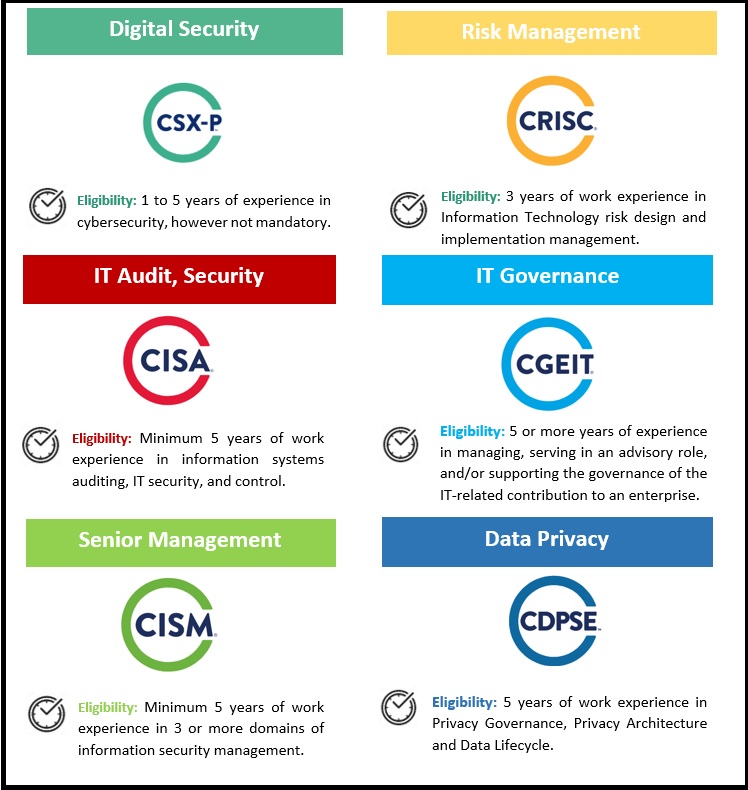The Certified in the Governance of Enterprise IT (CGEIT) course, offered by ISACA, is a comprehensive program that equips learners with the necessary knowledge and skills to govern enterprise IT effectively. It is designed to promote the use of best practices and alignment with business goals, ensuring that IT resources are managed efficiently and responsibly within an organization.
CGEIT focuses on five key domains, with Domain 1: Governance of Enterprise IT, accounting for 40% of the curriculum. This domain delves into the essential components of a governance framework, covering Organizational structures, Strategy development, Legal and regulatory compliance, and the alignment of governance strategy with enterprise objectives. It also encompasses Stakeholder analysis, Communication strategies, and the Management of information assets.
By completing the CGEIT course, learners will acquire a deep understanding of how to ensure IT governance contributes to strategic goals, risk management, Resource optimization, and Benefits realization. The CGEIT ISACA certification is thus a valuable credential for IT professionals aiming to advance their careers in IT governance and contribute to their organization's success through effective IT governance frameworks.

Purchase This Course
♱ Excluding VAT/GST
Classroom Training price is on request
You can request classroom training in any city on any date by Requesting More Information
♱ Excluding VAT/GST
Classroom Training price is on request
You can request classroom training in any city on any date by Requesting More Information

1-on-1 Training
Schedule personalized sessions based upon your availability.

Customized Training
Tailor your learning experience. Dive deeper in topics of greater interest to you.
Happiness Guaranteed
Experience exceptional training with the confidence of our Happiness Guarantee, ensuring your satisfaction or a full refund.

Destination Training
Learning without limits. Create custom courses that fit your exact needs, from blended topics to brand-new content.

Fly-Me-A-Trainer (FMAT)
Flexible on-site learning for larger groups. Fly an expert to your location anywhere in the world.
To successfully undertake training in the Certified in the Governance of Enterprise IT (CGEIT) course, participants are expected to have a foundational understanding and experience in enterprise IT governance principles and practices. The minimum required prerequisites include:
These prerequisites are meant to ensure that participants can fully engage with and benefit from the course content. Individuals who meet these minimum requirements will be best positioned to understand the material and apply the concepts taught in the CGEIT course.
The CGEIT course equips professionals with advanced skills in enterprise IT governance, focusing on aligning IT with business strategies.
Job Roles and Audience for the CGEIT Course:
The CGEIT course equips professionals with essential knowledge and skills to govern enterprise IT and align IT with business strategies, ensuring legal compliance, risk optimization, and resource management.
Communication strategies encompass the methods and techniques used to convey information and facilitate effective interaction between individuals or groups. These strategies ensure clarity, prevent misunderstandings, and enhance productivity in professional settings by tailoring messages to the audience, choosing appropriate channels for communication, and employing active listening skills. Effective communication strategies also involve feedback mechanisms to assure the receipt and understanding of the message, encouraging a collaborative and adaptive communication environment.
Organizational structures define how activities such as task allocation, coordination, and supervision are directed toward achieving organizational aims. They can be hierarchical, where every entity is subordinate to a single other entity, or flat, which involves fewer levels of middle management. More modern organizational structures include matrix and network structures. All of them aim to establish clear lines of authority and communication within the company, helping to streamline decision-making and adaptation in dynamic business environments. Understanding these structures is crucial for effective management and operational efficiency.
Strategy development involves creating a long-term plan to achieve specific organizational objectives. It starts with defining a clear vision and goals, then analyzing the environment and resources to identify opportunities and threats. Strategies are developed to capitalize on the opportunities and mitigate threats using the resources available. This process requires continuous assessment and adaptation to align the strategic steps with market and internal changes, ensuring the organization stays on a path to success.
Governance of Enterprise IT is about establishing a framework and continuous oversight that ensures IT resources are used effectively and align with the business’s goals and strategies. The CGEIT certification, offered by ISACA, verifies professionals' expertise in managing and advising on enterprise IT governance. A CGEIT course or data governance certification training can prepare individuals for roles that require overseeing IT operations, ensuring compliance, and managing risks. CGEIT training online further enhances accessibility for professionals seeking to gain or reaffirm their qualifications in this critical field, ensuring comprehensive preparation for governance responsibilities.
Legal and regulatory compliance involves adhering to laws, regulations, and guidelines relevant to business operations. It's essential for organizations to ensure their activities align with legal standards to avoid fines and reputational damage. This is particularly critical in areas like data protection, financial accountability, and workplace safety. Compliance requires continuous monitoring and adaptation to new legal contexts, often supported by specialized training such as the CGEIT certification. This certification, provided by ISACA, equips professionals with the necessary skills to oversee and govern enterprise IT and manage risks efficiently while ensuring compliance with regulatory requirements.
Stakeholder analysis is a technique used to identify and understand the importance of key people, groups, or institutions that might significantly impact the success of a project or business endeavor. This process involves evaluating stakeholders based on their interests, influence, and involvement in a project to effectively manage their expectations and foster support throughout the project lifecycle. The goal is to strategically engage and communicate with stakeholders to ensure the project's objectives are advanced efficiently and beneficial relationships are cultivated.
Management of information assets involves strategically overseeing an organization's data, documents, and intellectual property to support business objectives. It includes creating policies, procedures, and audits to ensure that data is accurate, accessible, secure, and compliant with regulations. Key initiatives often involve ISACA CGEIT certification, which equips professionals with skills and knowledge for effective governance of information and technology. CGEIT training online and data governance certification training are valuable in mastering these competencies. A CGEIT course specifically helps in enhancing the understanding and implementation of information asset management frameworks and practices.
Risk management involves identifying, assessing, and prioritizing risks to minimize, monitor, and control the probability and impact of unfortunate events. It is key in safeguarding an organization’s resources and ensuring stability. Techniques and processes used help to manage uncertainty in decision-making. Achieving a CGEIT certification, specifically through ISACA CGEIT courses, enhances one's capabilities in governance and strategic risk management. Professionals often take CGEIT training online to boost their skills in implementing governance infrastructures aligning with business goals. Data governance certification training further sharpens the ability to handle data-related risks effectively.
Resource optimization is the process of allocating available resources in the most efficient manner possible to maximize their use and achieve the best outcomes in a project or operation. This involves strategizing on how best to use resources such as time, money, and manpower to increase productivity and reduce waste. This tactic is crucial in project management where limited resources must be used judiciously to meet project goals on time and within budget. Techniques used in resource optimization include scheduling, predictive analysis, and resource leveling, to ensure that every resource is used effectively without overuse or underutilization.
Benefits realization is the process of ensuring that projects and initiatives deliver the expected outcomes and benefits. It involves planning, measuring, and managing results to align with strategic objectives. Effective benefits realization includes setting clear goals, tracking progress, and making adjustments as needed to maximize returns from investments. This proactive approach ensures that resources are used efficiently and that the outcomes contribute positively to the overall success of an organization. Through disciplined implementation, benefits realization helps organizations achieve concrete improvements and tangible value from their projects.
The CGEIT course equips professionals with advanced skills in enterprise IT governance, focusing on aligning IT with business strategies.
Job Roles and Audience for the CGEIT Course:
The CGEIT course equips professionals with essential knowledge and skills to govern enterprise IT and align IT with business strategies, ensuring legal compliance, risk optimization, and resource management.


